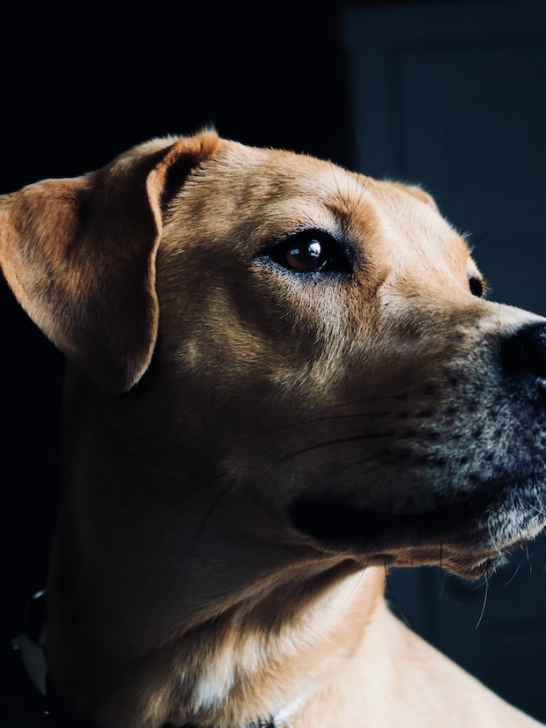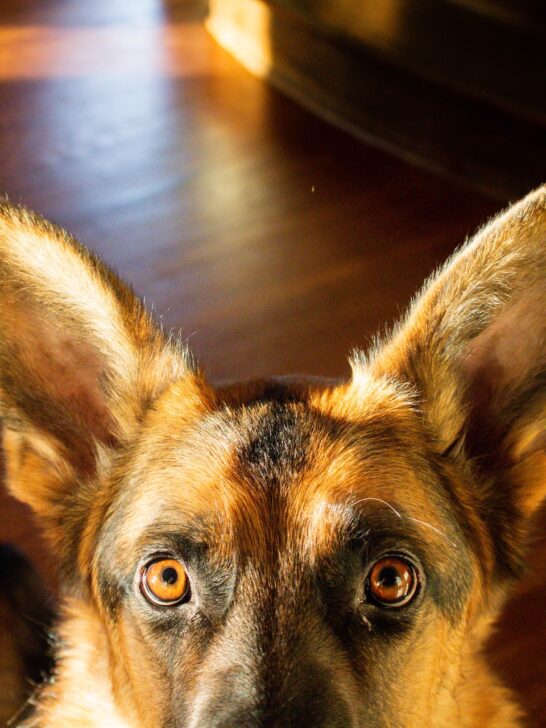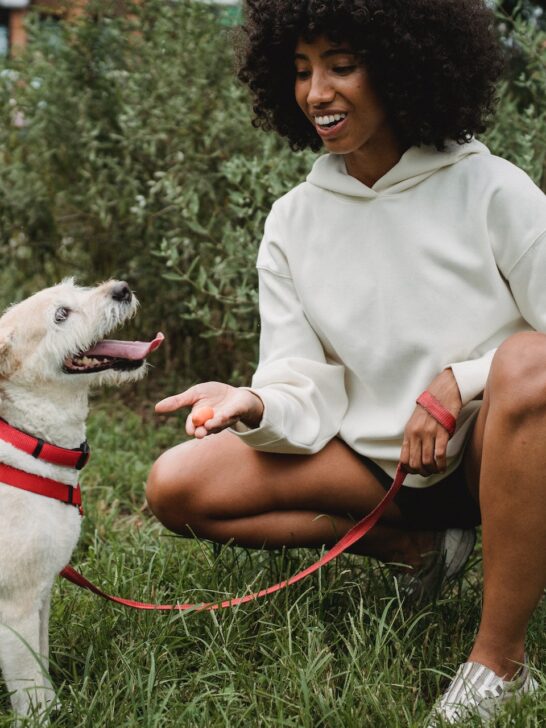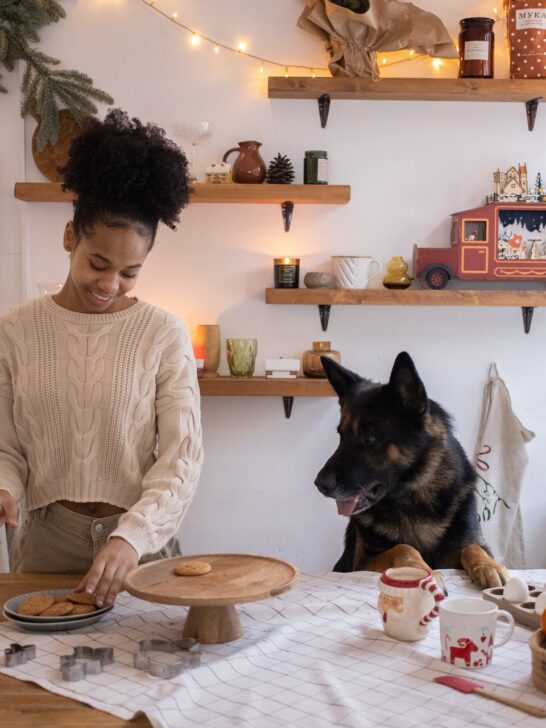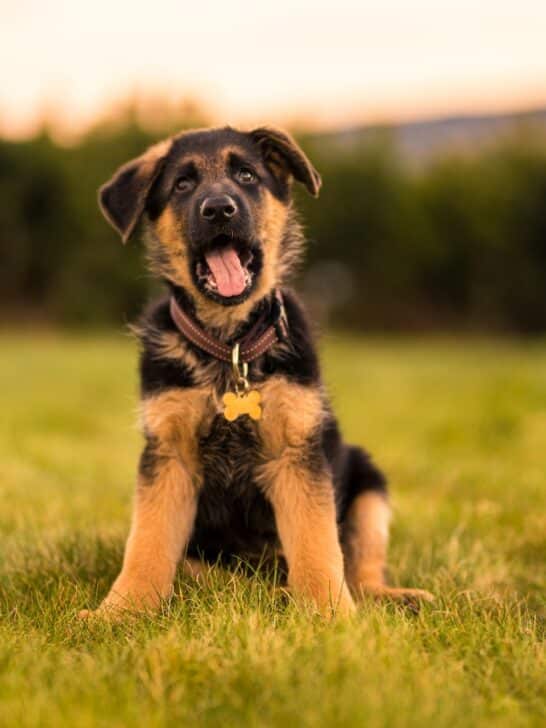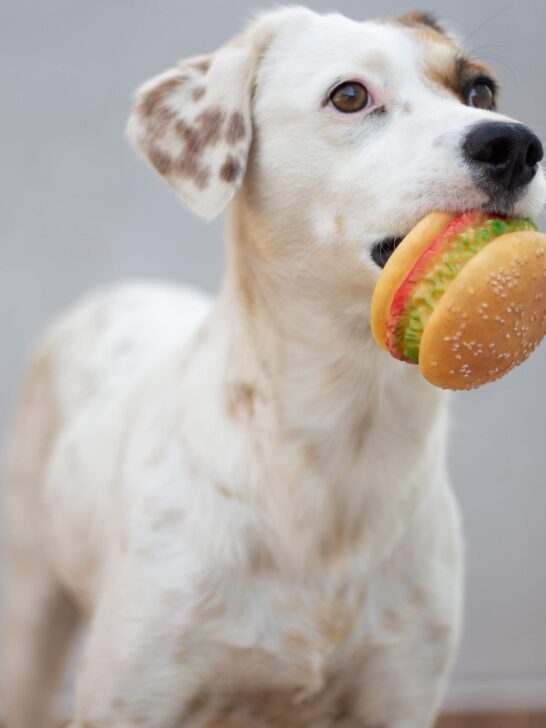Complete Guide To Caring For Your Dog
Introduction
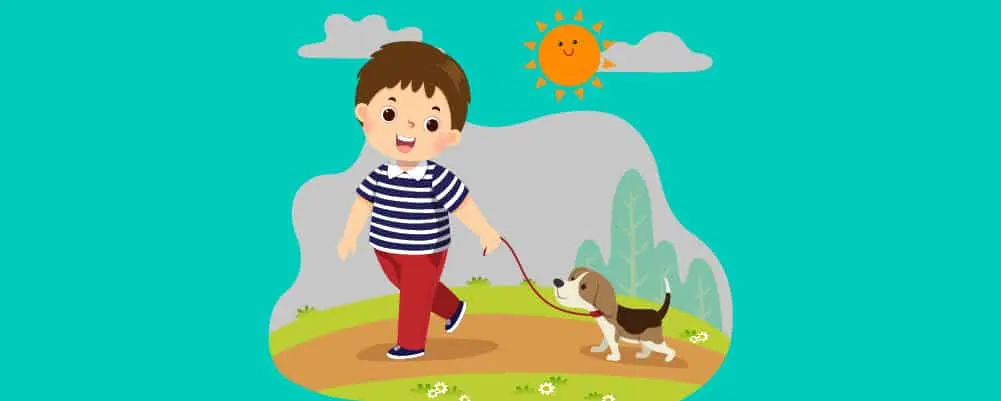
Many of us already know the basic things that dogs need, like a cozy bed and suitable food and drink, but how much do you really know?
Like any pet, there’s a lot to consider when caring for your dog. Every responsible pet owner should do their best to learn all about their pet’s needs to give them a healthy and happy life.
Since you’re here, you’ve already taken the first step! In this guide, we have an overview of how to take care of your favorite canine, no matter the breed. Below you’ll find sections on each aspect of dog care:
- Understanding Dog Needs
- Feeding Your Dog
- Exercising Your Dog
- Grooming Your Dog
- Handling Your Dog
- Housing Your Dog
- Staying On Top Of Your Dog’s Health
- Caring For Your Dog
- Dog Essentials
It may look like a lot but we’ve kept these sections simple yet informative, so you get the knowledge you need for less effort.
To do this, we’ve also included links to supporting materials so you can read even deeper into certain topics that we mention throughout this guide.
To cater to your dog’s basic needs, we need to understand what those are, so let’s get to it!
Understanding Dog Needs
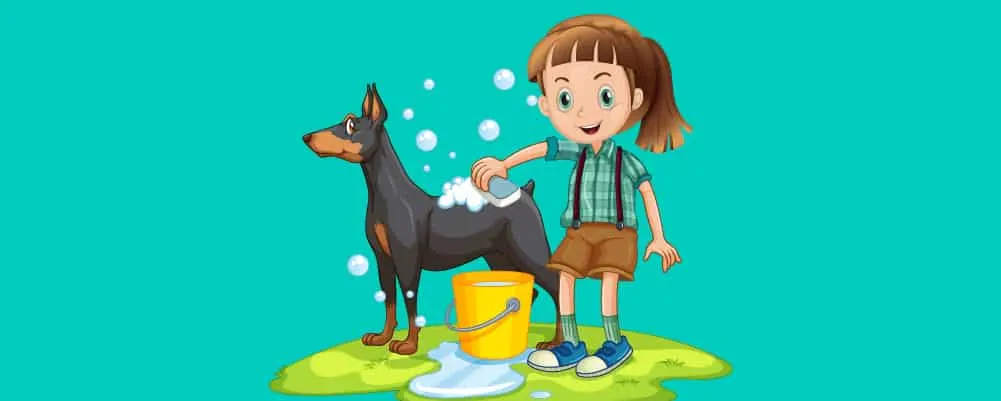
Caring for any animal is all about learning their basic needs and meeting them. This even applies to humans! Once basic needs are met, then you can pile on all the love and affection that your dog deserves.
Your dog can’t survive off of cuddles alone, so let’s take a look at the features that every dog breed has.
Have Highly Developed Senses
Like many other animals, dogs have senses that are much sharper than ours.
While we walk upright and build things to make our lives easier, dogs are still in tune with their environment and need highly developed senses to survive and thrive.
A dog’s sense of smell is somewhere between ten thousand and a hundred thousand times more powerful than ours, depending on the dog breed.
Even the breeds with the weakest sense of smell have us outgunned when it comes to sniffing out their environment.
We have six million olfactory receptors while they have up to three hundred million, so there’s no competition.
Besides the scent, dogs can also hear sound frequencies that we can’t. That’s how dog whistles work, by creating a high-pitched noise that we can’t hear but they can.
They also see better at night. It’s commonly claimed that dogs see in black and white but this isn’t the case.
They see fewer colors, so they don’t see the rainbow and instead see the world through blues, yellows, and many shades of grey.
Uses A Range Of Communication Methods
With those advanced senses come a range of sophisticated communication methods that humans need to learn.
They can go over our head pretty often, so learn the three main forms of communication that your dog will engage in:
- Body Movement: Every animal engages in body language, including us, and your dog is no exception. These involve moving the face, ears, limbs, tail, and even the entire body sometimes. A commonly understood one is the head turn, where your dog is curious or uncertain about something. Licking is generally asking for some scratches, as is rolling over. There are many of these movements that you should learn.
- Sound Making: This is the one all of us know. We communicate through sound-making when we speak but, for our dogs, they instead produce a range of complex sounds. These can be grouped into barks, whines, growls, howls, sighs, and groans.
Barks can be joy or anger/fear, so they’re largely context-dependent.
Whines are also very versatile, so they could be afraid or in pain, or simply wanting their favorite toy or to go outside. Context matters here, too!
Growls are commonly interpreted as a threat. While true in many cases (a dog’s growl should always be respected) they can also happen when playing with a toy in which case your dog is trying to intimidate the toy and not you.
Some dogs howl more than others, like Huskies. A howl generally means that they’re trying to communicate. It’s also contagious, so one dog howling may start more dogs howling. This seems to be something inherited from wolves! Dogs commonly howl when they feel left behind too, so your dog may feel lonely.
Sighs and groans are both expressions of disappointment, though they might do this while settling for sleep too. After a period of activity, a sigh or a groan could be communicating disappointment that they’re not getting what they wanted from you.
- Scent Transmission: With how advanced their sense of smell is, dogs also use smells to communicate. These methods of communication are typically used with other dogs and use urine, feces, and other scent secretions that are virtually undetectable for us. A common example is where dogs may try peeing on surfaces to claim them, which can cause issues if you own multiple male dogs who are competing for territory in your home. Fortunately, these behaviors can be trained out of them.
Diverse In Size And Shape
The needs of your dog may depend on their physical stature, which varies wildly between canine breeds.
There’s a big weight, height, and shape difference between a Chihuahua or a Pug when compared to Labradors and Huskies, after all. Dog weights can range from one kilogram to over a hundred kilograms.
Make sure you can recognize musculoskeletal issues common for certain dog shapes and maintain a healthy weight for your dog breed.
Athletic And Playful
Dogs live very active lives, which can’t be said for all of us! The larger the dog, the more exercise they’ll need.
Some dog breeds, like greyhounds and whippets, can almost run as fast as horses when they get going!
You can tell when your dog wants to play, which is where they have most of their physical activity when they do the “play bow.”
This is where they lower their front end while wagging their tail, and they might bark too.
Omnivores
You also need to know their dietary needs. Fortunately, dogs are omnivores so they can eat both meat and plant material.
Their teeth have been specially designed for this diet and they have the same teeth groups that we do, as fellow omnivores.
That said, there are foods your dog cannot eat under any circumstances such as:
- Avocado
- Alcohol
- Artificial sweeteners
- Cooked bones
- Corn when on the cob
- Chocolate
- Grapes and raisins
- Macadamia nuts
- Onion family foods (onions, garlic, chives)
- Sugary foods like ice cream (frozen berries or pineapple is better)
Inquisitive
While the temperaments of dog breeds will vary, you can generally assume that most canines are inquisitive souls.
They explore their surroundings enthusiastically through sight, sound, smell, and taste. Even wild dogs roam for miles in search of food and adventure, guided by their noses and ears.
Domesticated dogs will sniff all-around a new area to scope it out, so they should be given the time and space to explore and become comfortable in your home.
They also look for food in the same way, so make sure you don’t leave toxic foods where your dog can reach them!
Social And Intelligent
There’s a reason that dogs are a man’s best friend – they are some of the most social and intelligent animals that humanity has domesticated.
Many dogs help us, especially guide dogs who use their amazing senses to help those who can’t see or hear for themselves, and humans should help their dogs in kind.
While they are very loyal, your dog will be able to tell when you exert negative or abusive behaviors toward them.
This isn’t the way to discipline a dog. They are companions and so they must be treated with the respect they deserve, which means they should be disciplined humanely.
Feeding Your Dog
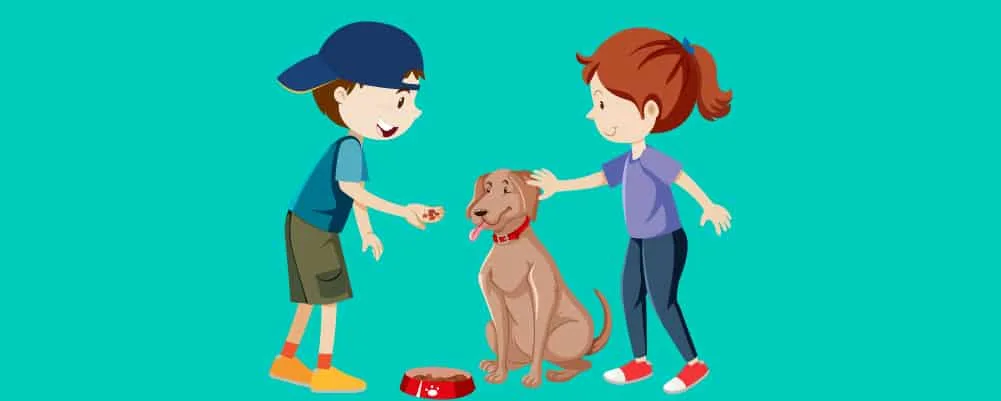
Your dog’s diet will depend on the breed, its lifestyle, and how old the dog is at the moment. You also have a lot of control over what your dog eats.
Some prefer to stick to strictly dog food while others may give them meat and vegetables for a balanced diet (and stay away from toxic foods, of course!)
Let’s take a look at the dietary requirements of canine puppies and dogs.
Puppies
Puppies of all breeds grow very fast, so they need the right nutrients to ensure that they grow to become a healthy dog. Brand-named puppy food that you trust should be fed to puppies.
You can get different products for large breeds and small breeds, so get the best food products for your pup. Limit feeding them “human food” because it may cause problems and obesity.
Along with this, they should have plenty of clean water and their dishes should be washed frequently.
When the puppy is eight to twelve weeks old, they should have four small puppy meals a day.
When they reach three to six months old, you can reduce that number to three before settling at two meals a day for puppies over six months old until adulthood.
Dogs
When your dog is one, they have reached the equivalent of adulthood for canines. From here, one meal a day should be enough if you’re giving them the right foods.
Small snacks won’t hurt them much either. If the dog is large, it may be better to feed them two smaller meals a day instead.
A well-balanced meal for an adult dog should consist of good dry food, canned wet food, and water. As for human food snacks, they can have cooked eggs and some approved fruits and vegetables.
Any snacks given should not be more than ten percent of your animal’s diet.
Exercising Your Dog
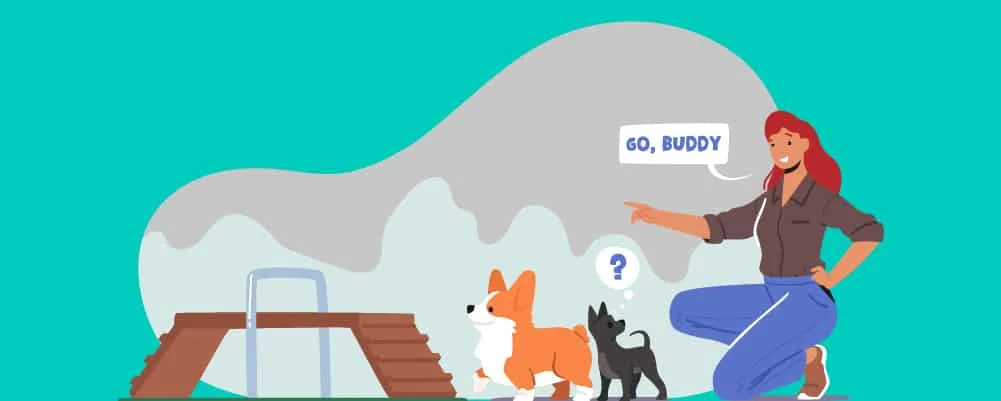
Like most animals, dogs need to exercise to burn calories and stay fit and healthy. It also stimulates their minds and appeals to evolutionary behaviors that have been with their species for thousands of years.
It also stops them from becoming bored, from which negative, destructive habits develop. Before you exercise your dog, you need to pay attention to the following qualities:
- Age
- Sex
- Size
- Fitness
Each of these determines what your dogs need. You can’t expect a Great Dane to put in the same legwork as a Chihuahua, after all.
Your exercise needs to be supportive and fun for the dog, so they engage with the activities and stay healthy.
You do this by creating activities that appeal to those instinctual behaviors that lie in the genes of every dog. Try to factor the following into a canine workout routine:
- Chewing
- Chasing
- Digging
- Fetching and retrieving
- Herding
Grooming Your Dog
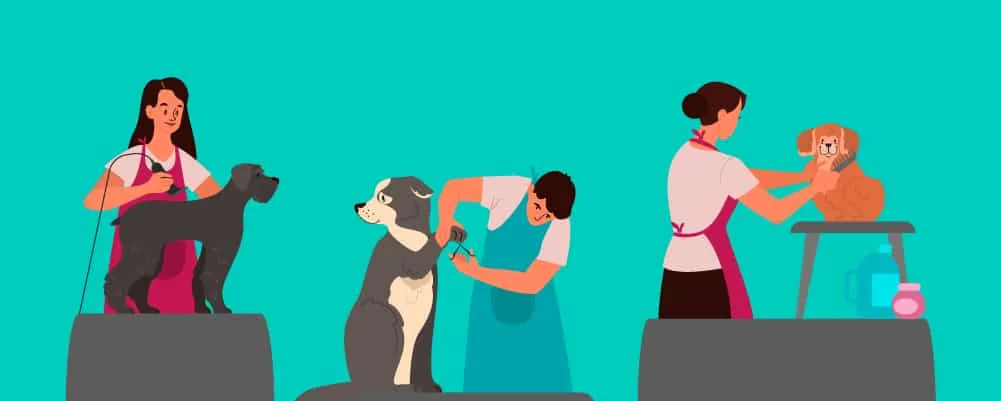
Dog grooming is pretty simple for the most part. We’ve distinguished casual and medical grooming here, so you’ll find more information on things like ticks and dental care later in this guide.
Right now, we’re just talking about bathing and treating your pet’s coat. These treatments change depending on whether the dog is short-haired or long-haired, so let’s go into more detail about that.
Some general tips apply to all dogs, so keep these in mind:
- Start grooming early. Dogs can find it scary when they’re groomed out of the blue, so raise your puppies to be comfortable with it. Start by brushing areas they like to get brushed and then slowly try the ears, tail, and belly. Use treats and attention to condition them too.
- Brush your dog’s coat to loosen hairs. The more hairs that come off when you stroke your dog, the more they need a bath!
- Use grooming sessions to examine their body, from their toes and nails to their ears and mouth.
- If stubborn knots or mats are present, cut them out instead of trying to brush them.
Short Haired Coats
Short-haired dogs are generally easier to groom. First, they typically require bathing a few times a year, we’d say once every two months, assuming they don’t get muddy through play.
Some prefer to groom them every month, so it depends on your dog’s coat condition and temperament.
Short-hair grooming can be done in five simple steps:
- Get your grooming equipment together, usually a grooming brush or specially made mitten with a sterner bristle brush.
- Use the brush/mitten to remove any surface dirt or loose hair.
- Brush with the dog hairs, not against them, as that can be uncomfortable.
- Use the bristle brush to remove deeper dirt or dead hairs.
- Shampoo and condition the dog, making sure no soap residue is left when you rinse them off since it’ll make hairs catch dirt even faster.
Long Haired Coats
Long-haired coats take more effort to keep clean, just like how humans with long hair need more care. That said, they can still be managed in five steps:
- Run your fingers through the dog’s coat so that there are no mats or knots. For tangles, a pinhead brush is best but you should still be careful in sensitive areas. If there are knots that can’t be removed by you, don’t force the issue and see a vet or a dog grooming specialist instead.
- Tackle your dog’s coat in areas, not all at once.
- Brush forwards and backward to bring out the shine in your dog’s long coat.
- Remove hair from the brush as you go and take care not to irritate your dog’s skin.
- Bathe your dog. Some like to do this before brushing but moisture can make mats and knots even stronger.
Handling Your Dog

When lifting or otherwise touching your dog, there are rules. If the dog is a puppy or small, one hand should be under the dog’s chest and the other should be supporting their rump.
Lifting your dog by the tail, neck, or legs is a big no-no, so never do this. It’s borderline, if not outright, abusive.
If you have to lift your large dog then lucky you, we hope you’re up to the task. Ideally, larger dogs should be well trained in adulthood so lifting them is a rare occurrence.
During those occurrences, lift from the underside and support their rear end, just like with a smaller dog.
Housing Your Dog
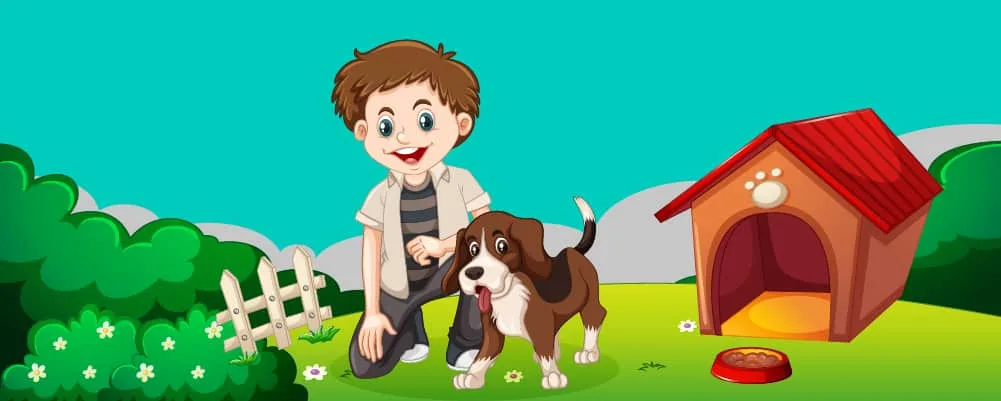
How your dog is housed is just as important as how you treat them during everyday life. They need shelter, a warm and quiet place where they can escape the coldness of the wind or the bare floor.
Let’s take a look at training crates, bedding, and how your dog should be catered for when they spend time outdoors.
Training Crate
If your dog is making use of a training crate, you can still fit a dog bed in there to make it more comfortable for them.
Along with that, they need to have something to keep them entertained, like a toy. If your dog is crated at night, be consistent so you don’t confuse them.
Crates can be useful for securing your dog or giving them a place for a temporary time-out during the day. Leave them with a toy, something to eat, and a comfortable bed, until they have calmed down.
Needless to say, you should never use a crate as punishment.
Bedding
You’ll need a dog bed to take care of a dog. Make it comfortable, with a thick lining and a pillow, and maybe even a blanket if your dog is okay with having it over them.
Their bedding needs to be washed often to keep their coat clean and healthy.
Outdoors
Even in the backyard, your dog should have a shelter where they can escape the sun, along with other shaded areas.
There should also be a spot where your dog can sunbathe and it should not be far from cool water that’ll help the dog out during hot days.
Staying On Top Of Your Dog’s Health

A big part of caring for your dog is keeping them healthy. As an animal, your dog can’t walk to the veterinarian’s office and get assistance themselves, so it’s your responsibility as the owner.
Here’s a rundown of the things you should have covered to make sure your dog is in its best condition.
Vet Insurance And Bills
Pet insurance will help you and your dog in the instances where something unexpected happens and veterinary bills need to be paid.
The insurance will differ depending on the provider, your country/state, and the specific plan you go for.
Go for something you can comfortably pay throughout your dog’s whole life if you want the best protection.
Dental Care
Your dogs explore the world through their mouths, so dental care is important. Many overlook their dog’s mouth health but this can cause issues in the future, costly issues.
Try these five tips to diagnose and treat issues with your dog’s mouth:
- Check if their breath stinks. Dog breath isn’t pleasant anyway but you should be able to notice if it gets worse. This could be poor dental health, decaying teeth, or periodontal disease.
- Pay attention to the dog’s soft tissue in their mouth too, like their gums and their “lips.” If the gums are red, swollen, or even whitened, then check with the vet’s office. They should be pink.
- Check the teeth. If they’re brown or yellowed, this is likely plaque and tartar buildup that’s harmful. If it gets worse, it could become an infection that causes tooth decay and inflammation, which are painful. If the dog isn’t eating and is constantly lethargic, it may have oral disease.
- Brush your dog’s teeth regularly. Some do it daily but you can leave more time between brushing, especially if your dog isn’t a fan. Buy a special dog toothbrush for a fingertip brush that’s easy to use with toothpaste that’s made for dogs. Human toothpaste is toxic to dogs.
- Make sure your dog’s diet promotes healthy teeth. Chew toys are great for this, and they’re toys so they relieve boredom. They naturally clean the teeth and keep plaque away. Buy food that prevents the buildup of tartar too.
Fleas And Ticks
You should inspect your dog for fleas and ticks often. You can rest easy during colder months (unless you’ve let your dog play in long grass) but during summer months you should check them daily.
You can also use special tools and treatments to keep ticks and fleas at bay, many of which can be suggested by your veterinarian.
Spaying And Neutering
Spaying and neutering your dogs have many medical and behavioral benefits, such as:
- Preventing testicular cancer and prostate issues.
- Preventing uterine infections and breast tumors.
- Spayed females won’t go into heat and neutered males won’t wander away to find a mate.
- Neutered males might behave better. Some will stop marking their territory and be less aggressive with other males.
It also stops the potential costs that would be present if the dog needs medical assistance or has pups that you’ll need to cater for. Neuter your dogs between six and nine months old, and older.
Once they’ve been treated, give your pet a nice place to recover and stop them from engaging in physical activities. Make sure they don’t lick the wound too and avoid bathing for ten days.
Vaccinations
We need vaccines to cope with certain diseases in the wild and dogs are no different. Where they might have perished in the wild, nowadays we can vaccinate and save our furry friends.
Not every dog needs to be protected against every disease, so pick your battles and discuss with your veterinarian which diseases are more common in your area.
A core vaccine for a dog will tackle the following:
- Canine hepatitis
- Canine parvovirus
- Distemper
- Rabies (mandated in many states)
Your vet will likely recommend non-core vaccines too that are prevalent in your area, which you should typically accept.
Puppies will have some immunity from the mother if she was vaccinated and nursed them with her own milk.
Starting from six to eight weeks of age, your pup should receive a series of vaccinations spaced out by three to four weeks.
Medicines And Poisons
When it comes to medical advice, you’re better off listening to your veterinarian than us.
They know more about your pet and the problems they might be facing, and all the right questions to ask to properly diagnose them.
What we can do is advise you on common things that are poisonous to your dogs, which includes some medications too. Here are ten dog poisons that you should avoid at all costs:
- Medications with acetaminophen, ibuprofen, and naproxen in them.
- Any other prescription medications that have been prescribed to people, especially anti-inflammatories and antidepressants.
- Commercial tick, painkiller, or deworming medications that aren’t verified. Consult with your veterinarian before introducing any medications.
- Household cleaners and home chemicals like paint thinner, antifreeze, and kitchen cleaners. Insecticides and rodenticides are poisonous too.
- Certain plants like daffodils, tulips, sago palms, azaleas, and rhododendrons. Well-trained dogs shouldn’t try munching at the local plants.
A sure way to avoid many of these is to dog-proof your home.
Caring For Your Dog
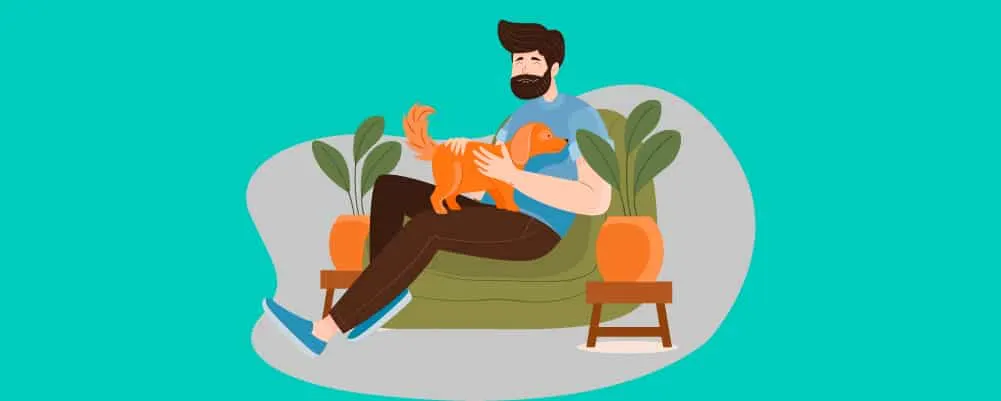
As we near the end of our guide, here’s a quick rundown of how you should care for your dog. You can use this section as a checklist if you’re ever in doubt about your abilities to cater to your pet.
Provide A Protected And Clean Living Environment
Your dog’s home should have a bed and plenty of shelters, shade, and some sunbathing room if they’re kept outside. Keep the area clean and free of feces often so your dog can stay healthy.
Always Have Fresh Water Available
No matter where your dog is kept, you should have clean water available. Water from the faucet should be good enough for your canines.
Keep water outside if that’s where your dog stays too, so they can stay hydrated and cool off.
Buy Quality Dog Food
Make sure your dog is eating quality food. Buy dry and wet food that’s awarded for safety and healthiness by accredited institutions.
If you feed them “people food” then you should make sure it’s healthy for your dog to consume, and no more than ten percent of their overall diet.
Exercise Daily
Get some form of daily exercise. For most dogs, a leashed walk daily will be enough.
You can also play at home, throw a ball around your backyard, and take your dog to safe and isolated fields and beaches where they can run free without bothering others.
Communicate With Your Dog
Learn the communication methods of your dog and communicate back.
Pay attention to the head and tail, and which noises the dog makes, and make sure you don’t make any loud noises or sudden movements that will make your dog anxious.
Train Your Dog
Train your dog in the behaviors that are socially expected of them. They should be docile and able to sit, heel, and recall before you take them in public places.
Train territorial behaviors like urine marking out of them too.
Here’s a step-by-step guide to training your dog fully.
Dog Essentials
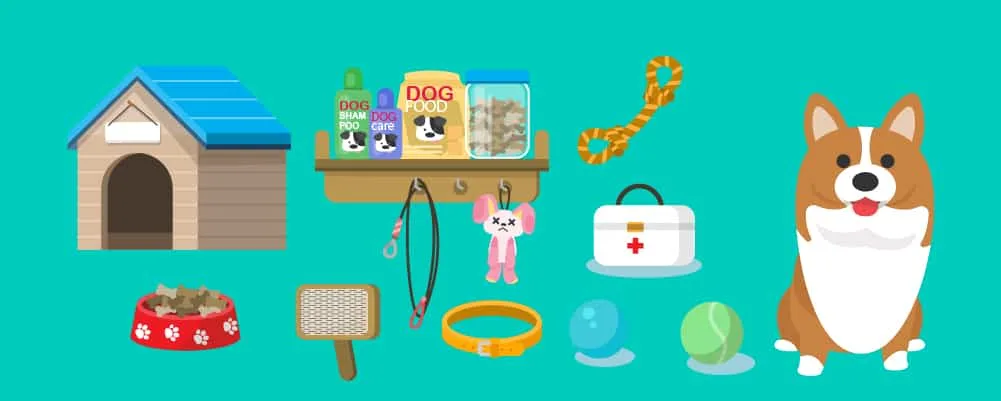
Taking care of your dog requires a lot of specialist equipment. Before you try taking care of your dog, make sure you have the following equipment:
- Dog Food And Treats
- Food And Water Bowls
- Toys
- Grooming Utensils
- Collar
- Leash
- Dog Bed
- Training Crate (optional)
- Hygiene Supplies
Summary
With that, we reach the end of our complete guide to caring for your dog. By now, you should have everything you need to keep your dog safe, happy, and healthy throughout its life.
By practicing the methods above, you can be proud that you’re a caring and responsible pet owner.
We’ve covered a lot and provided references for other topics that will help you care for your pet.
Even then, if you ever find yourself questioning what to do, you should contact local experts like dog groomers and veterinarians for expert advice on canine care.
























